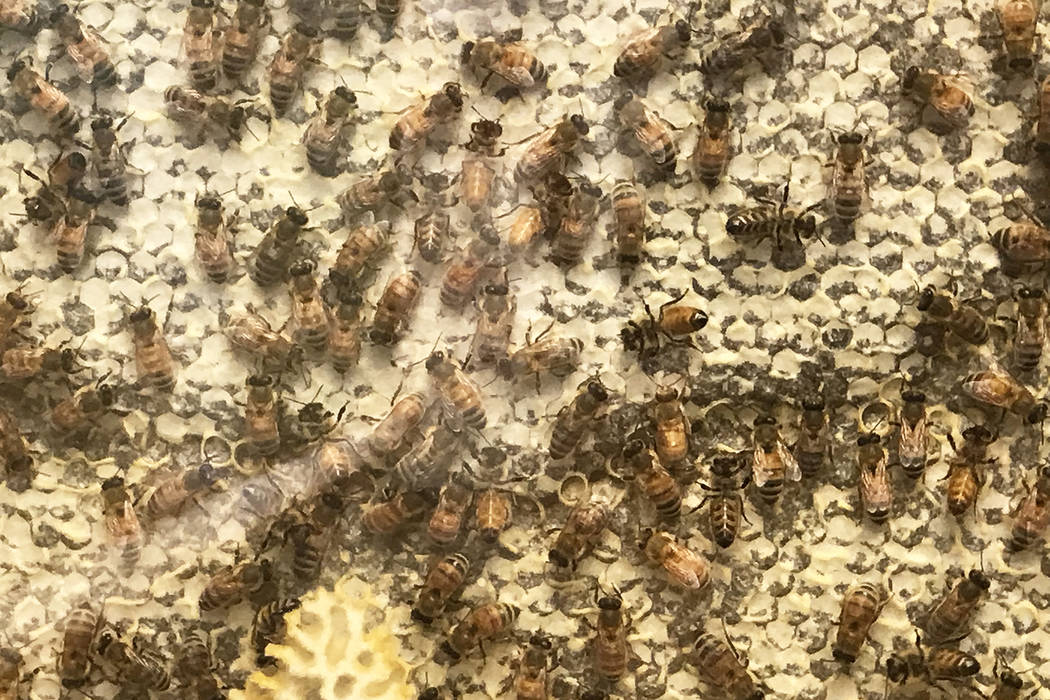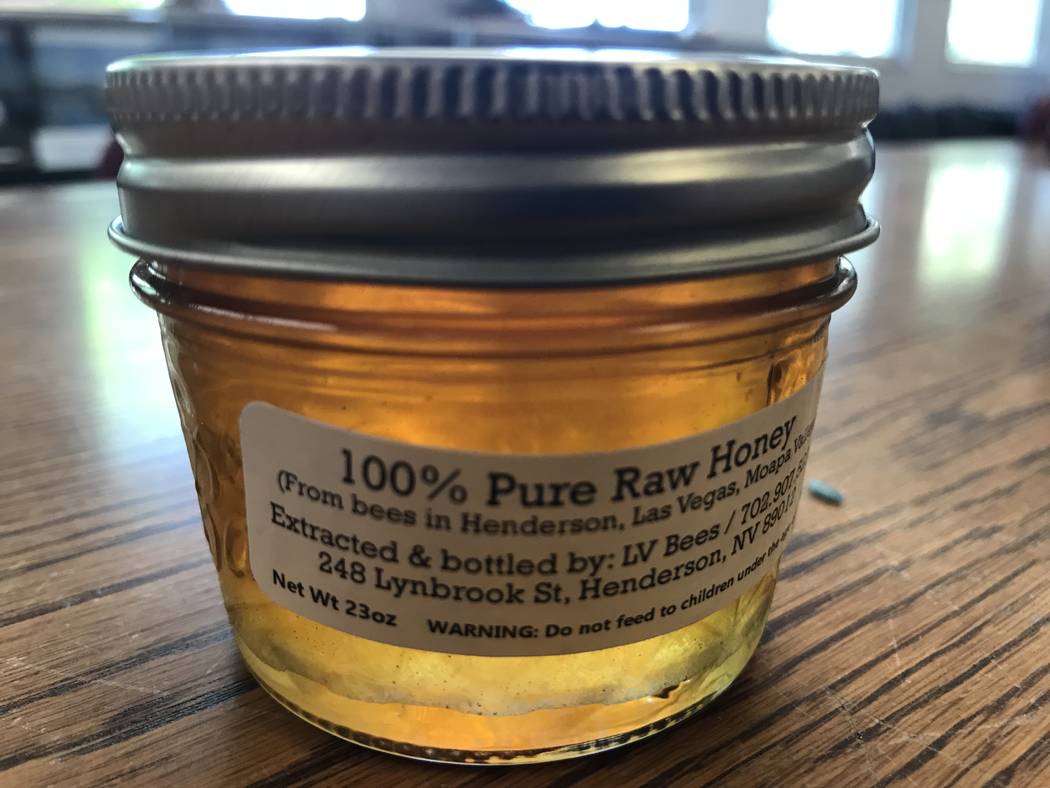Henderson Bird Viewing Preserve showcases working honeybees
A honeybee exhibit at the Henderson Bird Viewing Preserve allows visitors to safely see thousands of bees at work.
The observation hive, which is enclosed behind glass, was installed in March at the preserve’s visitor center. Dave Sharpless, president of LV Bees — a no-kill bee-removal service — designed and built it. Sharpless also has a contract as the city of Henderson’s beekeeper, which started earlier this year. His compensation: honey.
The observation hive is home to between 20,000 and 30,000 bees, said Chuck Ashby, Henderson’s outdoor recreation supervisor.
But by comparison, the hive is actually “quite small,” he said, since some observation hives can house as many as 60,000 bees.
The 140-acre preserve also has 21 hives that were removed from places such as city parks, homes and schools. They’re in a remote area toward the back of the preserve that isn’t accessible to the public.
In 2018, the city received a $5,000 grant from Bayer Bee Care Program’s “Feed a Bee” initiative. It used the money to buy 20 trees and 200 flowering plants, which serve as food for the bees, the city said in a statement Aug. 14.
A couple of times a year, honey from the hives is processed and available to purchase.
Honeybees play an important role in pollinating trees and crops, Ashby said, but noted the population is declining.
Notable examples of crops that rely on honeybees include almonds, blueberries and cherries, according to the American Beekeeping Federation. On its website, the federation also notes honeybees have an approximately $20 billion impact on the value of agricultural production in the United States.
Ashby came up with the idea for an observation hive in Henderson after seeing a similar exhibit at a nature preserve in Ohio, where he travels regularly to visit family.
“I stood there for 45 minutes staring at the hives,” he said.
Henderson’s observation hive provides a safe environment for visitors to learn about bees, Ashby said. If visitors are lucky, he added, they may see the queen.
The hive is also home to some drones — male honeybees — whose entire purpose is to mate, Ashby said.
Twice a year, LV Bees and city employees process and bottle honey from hives at the bird preserve in Cornerstone Park’s kitchen.
About 30 percent of the honey produced is processed, the city said in a statement. In July, that was enough for 83 jars.
The bird preserve gives a share of the honey to Sharpless. After that, it sells its portion of honey for $18 for a large jar and $10 for a small jar.
In July, the bird preserve sold out on the first day.
The bird preserve is within the city’s water reclamation facility and attracts thousands of birds — migratory waterfowl and resident desert birds, according to the city’s website. There are nine ponds, as well as walking trails.
As Ashby talked about the observation hive Aug. 28 while indoors at the visitor center, the preserve’s desert tortoise named Tino — who’s about 12 years old — roamed near a conference room table, garnering attention from visitors.
Contact Julie Wootton-Greener at jgreener@reviewjournal.com or 702-387-2921. Follow @julieswootton on Twitter.
If you go
What: Honeybee exhibit
When: 6 a.m.-2 p.m. daily through November. The last entry is 30 minutes before closing. Hours change at other times of the year.
Where: Henderson Bird Viewing Preserve, 350 E. Galleria Drive
Admission: Free
Want to keep bees on your property?
In Henderson, an ordinance took effect in August 2018 that caps the number of beehives at two for lots that are 5,500 square feet to a half-acre.
The Henderson City Council’s action came partially as a result of complaints by residents in a neighborhood near Horizon Ridge Parkway and Stephanie Street about Dave Sharpless, who city officials said had about six hives in his yard. Sharpless has a contract as the city’s beekeeper.
One family said their son developed an allergy after repeated bee stings.























